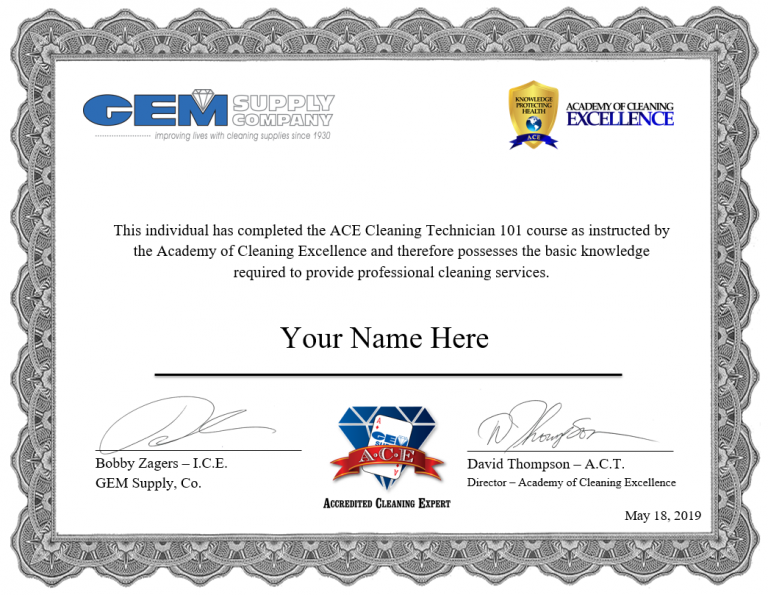Identifying and Using Hospital-Grade Disinfectants, CleanLink.com
Identifying And Using Hospital-Grade Disinfectants
- By Corinne Zudonyi, Editor
This Manufacturer Roundtable took the compilation of questions Facility Cleaning Decisions received from in-house custodial professionals and posed them directly to cleaning industry manufacturers. Here are their responses:
Contributors:
Jason Welch
Microbiologist
Spartan Chemical Co. Inc.
Maumee, Ohio
Sara Snow
Senior Scientist
Clorox Professional Products Company
Oakland, Calif.
Q: In a hospital setting, in what situations should workers use disinfecting agents versus cleaning/sanitizing chemicals?
Welch — The CDC has published guidelines for determining if a surface or area needs to be disinfected. Most surfaces (lobby areas and hallways) only need to be cleaned with a good detergent unless a special situation occurs, such as a bodily fluid spill, at which time cleaning staff should follow the guidance of OSHA’s Bloodborne Pathogen Standard.
Snow — Different products offer different levels of decontamination, appropriate for different situations:
• Sterilizers (also known as sporicides) eliminate all bacteria and fungi, their spores, and viruses. These products should be used on critical instruments that come in contact with sterile body tissues.
• Disinfectants kill microorganisms, but not necessarily their spores, and should be used on hard, inanimate, non-porous surfaces and semi-critical (contact mucus membranes) and non-critical (contact intact skin, environmental surfaces) objects in healthcare settings.
• Sanitizers reduce microorganisms (but do not necessarily eliminate them) to meet the levels considered safe as determined by health codes and regulations. Sanitizers should be used as labeled for food contact or non-food contact surfaces.
• Cleaning refers to the physical removal of soil and germs by washing or wiping to lift dirt and germs off of surfaces.
Q: What is the difference between a standard cleaner/disinfectant and one deemed hospital-grade?
Welch — This is defined by the EPA under: DIS/TSS-1 Jan 22, 1982 EFFICACY DATA REQUIREMENTS Disinfectants for Use on Hard Surfaces
• A cleaner is a product that does not make any antimicrobial claims or pesticide claims.
• A product cannot make a claim against an organism without testing it first and requires EPA approval of the data.
• A “Hospital Grade” Disinfectant only requires 2 organisms to be tested: Pseudomonas aeruginosa and Staphylococcus aureus.
• A one step disinfectant cleaner is an EPA registered disinfectant that has been tested in 5% blood serum.
Snow — Standard disinfectants are those found in household cleaning closets and are able to kill common bacteria.
Hospital disinfectants are EPA-registered for use in hospitals, clinics, dental offices, and other medical facilities, and must kill microorganisms often found in healthcare, including S. aureus, S. enterica and P. aerugionsa. Hospital disinfectants should be used on medical equipment and on environmental surfaces as part of a bundled infection prevention approach. Low, intermediate, and high-level disinfectants can be used in healthcare settings:
• Low-Level Disinfectants are EPA-registered hospital disinfectants that are effective for vegetative bacteria, most fungi, and most viruses. Typical active ingredients include quaternary ammonium (quats) or phenols.
• Intermediate-Level Disinfectants are EPA-registered hospital disinfectants that are effective against TB, vegetative bacteria, fungi and viruses, and some may have spore claims. Typical active ingredients include 70-90% alcohol, hypochlorite, hydrogen peroxide, phenols, or some quats.
• High-Level Disinfectants fall under FDA jurisdiction. They are effective against TB, bacteria, fungi, and viruses, and some, but not all, spores. Typical active ingredients include glutaraldehyde, OPA, hydrogen peroxide, or peracetic acid. These are required for instruments that come in contact with mucus membranes (bronchoscopes, endoscopes), but do not enter sterile body tissues.
![]()

